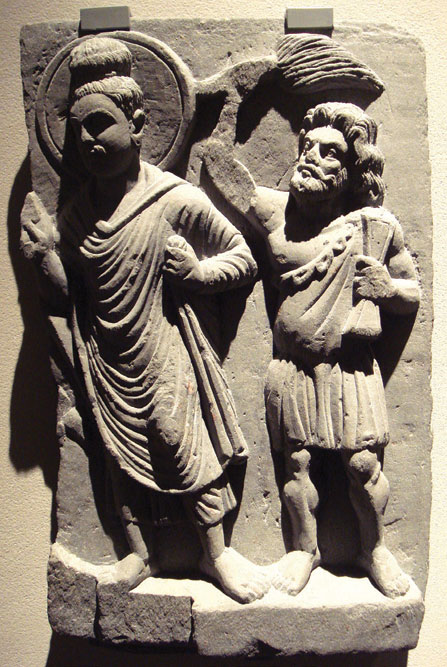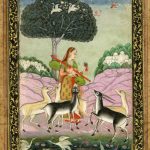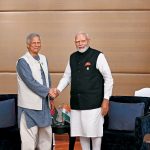The Good Orientalists
India would be a poorer place without the work of British archaeologists
 Zareer Masani
Zareer Masani
 Zareer Masani
Zareer Masani
 |
26 Aug, 2022
|
26 Aug, 2022
/wp-content/uploads/2022/08/Orientalist1.jpg)
The Sanchi Stupa (Photo: Alamy)
A CULTURAL HISTORY OF INDIA, dating from Palaeolithic times, a million-and-a-half years ago, to the present, might seem impossibly ambitious. T Richard Blurton, in India: A History in Objects (Thames & Hudson) accomplishes the impossible with a bird’s-eye view, covering the entire subcontinent from Afghanistan and Kashmir down to Sri Lanka, his task aided by the book’s many beautiful illustrations.
Blurton was himself for several years curator of the wonderful South Asia Gallery at the British Museum in London. His firsthand expertise culminated in several years’ researching and writing this book after he retired. Though he takes no part in current culture wars, he leaves us in no doubt that both India and the world would be a far poorer place without the work of British archaeologists and Orientalists who rediscovered, excavated, researched, conserved and catalogued so much of our cultural heritage and rescued it from oblivion. Many of them were mere amateurs fascinated by our lost art.
A prime example was the case of the Amaravati Marbles, dating back to Mauryan times, now beautifully housed at the British Museum. They were first discovered in a mound by a surveyor of the East India Company in the 18th century, who found the stones of the stupa being cannibalised for local buildings. Half-a-century later, an officer of the Raj’s Indian Civil Service started excavating the site and rescued the wonderful Buddhist friezes we see at the British Museum. These were only a small fraction of the Amaravati sculptures later excavated by the Raj and housed in the Madras Museum it had set up. That other Mauryan wonder, the great stupa at Sanchi, with its superb carved toranas and friezes, was also rescued and conserved, after an early abortive effort, by British officials in the 19th and 20th centuries.
Most of the art objects in this volume were acquired by the British Museum, with its commitment as a global centre of excellence. The author is always judicious about the many conflicts in our complex heritage. Take, for instance, the vexed question of whether our very earliest Indus Valley Civilisation, dating to 2500 BCE, died abruptly due to some cataclysmic event or blended into its Aryan successors. Its script, probably Dravidian, has not yet been deciphered, but its exquisite terracotta seals present images of bulls and even tigers, so common in later Indian art. Blurton’s view is that the later Indo-European arrivals intermarried with the remnants of the Indus Valley.
He points out that early Aryan society, recorded in the Vedas from around 1500 BCE, was predominantly “a nomadic cattle-herding people”, with no urban centres like those of the Indus Valley. Urban settlements were not a feature of the Indian landscape for much of the second millennium BCE and do not feature in the Vedas. Nor are they important in the Mahabharata or the Ramayana. By the 8th century BCE, however, small city-states emerge, with high levels of culture, including serious philosophical debate questioning Vedic ritual sacrifices and the caste hierarchy led by Brahmins. Out of such debate emerged both Buddhism and Jainism.
As this book reminds us, the first imperial Indian state was that of the Mauryan dynasty, based at Pataliputra, now Patna, converted to Buddhism by its most famous emperor Ashoka. Though his edicts, carved into bronze pillars and rock-faces, were found across the whole subcontinent, rediscovered and deciphered by British officials, Blurton points out that it’s uncertain how far Mauryan control actually extended beyond its Indo-Gangetic heartland.
This book reminds us “that much of the history of the subcontinent has been a story of peripheries, rather than of centres. There have been times when a great central power has dominated, but these have been the exception.” It nonetheless identifies several continuities across those peripheries. One, dating back to the Indus Valley, has been the production of terracotta images. “Clay figurines of this type”, says Blurton, “stand at the very beginning of a lineage which, even in the 21st century, is continuing to diversify. Terracotta images are still being made and offered in shrines in many parts of the subcontinent, though any religious purpose in prehistory is unclear. ”
Half-a-century after the Amaravati marbles were discovered, an officer of the Raj’s Indian Civil Service rescued the wonderful Buddhist friezes we see at the British museum. The other Mauryan wonder, the great stupa at Sanchi, with its superb carved toranas and friezes, was also rescued and conserved, after an early abortive effort, by British officials in the 19th and 20th centuries
From the middle of the first millennium BCE, he tells us, “the landscape of South Asia has been dominated not by the residences of princes, but by the houses of the gods—temples, mosques, shrines and tombs. Only in early modern times, from the arrival of Islam in the subcontinent, and above all during the rule of the Mughals, their successors and finally the British, has secular architecture become as important.”
Indian textiles, however, have dazzled the whole world for at least two millennia. “Archaeological excavations record that cotton was woven at Mehrgarh in Baluchistan and then later, in the cities of the Indus Civilization. The early cultivation of cotton, and knowledge of how to dye and decorate it, was hugely important in the development of South Asian culture”. Ancient examples have been found in Egypt, the earliest of these dated to the 8th century CE. They were probably produced in Gujarat, much later the most important centre for embroidered floor-spreads and counterpanes, mostly for the European market, work of great quality in chain stitch by professional craftsmen.
The Mauryans were followed by a series of dynasties, ranging from the Indo-Greeks of Bactria to the Central Asian Kushans based at Mathura. Both enriched local traditions with their own foreign influences. The prime example, of course, were the wonders of Gandharan art, Buddhist in subject matter, but dressed and sculpted in styles identical to those of contemporary Rome. Blurton gives many examples of such fusion, like the Indo-Greek king Menander engaging with Buddhism and a later Greek Heliodorus becoming a devotee of Vishnu. Such contacts encouraged sea-borne trade with the Roman Empire, where Indian pepper was popular. Gandharan sculpture is full of classical Greek characters assuming new Indian identities. Hercules, for example, becomes Vajrapani, companion of the Buddha. The most exquisite example from Gandhara illustrated here is a casket from the Bimaran Stupa in eastern Afghanistan, made of sheet gold set with garnets and turquoise, found by Charles Masson, the East India Company soldier/archaeologist.
BLURTON DESCRIBES HOW the importance of Buddhism declined with the rise of the predominantly Hindu Gupta Empire, whose art is generally considered the golden age of our civilisation. The wonders of Gupta art gave us our earliest surviving paintings, the sublime frescoes at Ajanta, again rediscovered and conserved by British officials and Orientalists. Buddhism survived at its great centre of Sarnath, but presumably due to Hindu influence, the Buddha became less human, more divine, and was often interceded with by bodhisattvas, semi-divine beings. We learn how the long-lost, second major centre of Buddhism at Bodh Gaya was rediscovered and repaired by the British-founded Archaeological Survey of India in the 1880s.

The early medieval period brought its own cultural riches, epitomised by the superb, very distinctive bronzes of both the Cholas, based in Tamil Nadu, and the Palas in Bengal. The Pala style, along with their Buddhism, was exported to China, Tibet, Burma, Thailand and Indonesia, while the Cholas exported their Hinduism across Southeast Asia. Blurton reminds us that the purpose of Chola bronzes was mainly processional, where the wider public, including lower castes not allowed into temples, could make close eye-contact with their deities, who were richly dressed, bejewelled and garlanded for the occasion. We hear how the dancing Nataraj became the most iconic image of Hinduism across the world, promoted by the great, half-English art historian, Ananda Coomaraswamy, and the 19th century French sculptor Auguste Rodin.
British archaeologists and Orientalists rediscovered, excavated, conserved and catalogued so much of our cultural heritage and rescued it from oblivion. The dancing Nataraj became the most iconic image of Hinduism, promoted by the half-english art historian Ananda Coomaraswamy and the 19th century French sculptor Auguste Rodin
We also learn how Bhakti, personal devotion or faith, became increasingly widespread, focusing on the worship of Krishna and later saints. Bhakti often involved negation of caste and the role of Brahmins, increasing use of the vernacular instead of Sanskrit, and frequent crossover between Hindu and Sufi Muslim saints, both often depicted in Mughal paintings.
Blurton reminds us that both Christianity and Islam, far from being alien to the subcontinent, have a long history here, evident in art and architecture. Christianity arrived in the mid-4th century CE on the Kerala coast, evidenced by church inscriptions in ancient Pahlavi script. The wonderful Bom Jesus basilica in Goa dates back to the 16th century. Islam also arrived early with the first recorded mosque in Sindh in 780 CE. Kashmir first came under Muslim rule in the 12th century, under strong Iranian and Central Asian influences.
Blurton highlights the eclectic use of Hindu motifs, ornamentation and recycled stones in Islamic architecture, ranging from the Qutub Minar in Delhi to the Sidi Bashir mosque in Gujarat. He is excellent on the regional diversity of Indo-Islamic art, from the Shia kingdoms of the Deccan and Awadh, with their strong links to Iran, to the Sunni Mughals, who produced our finest school of painting, fusing Persian and Hindu styles and ignoring Sunni rules against human portrayal. Later Rajput schools also fused Persian traditions with vibrantly colourful and more informal local styles. Some of the most exciting miniature paintings in both content and colour combination came from the small principalities of the Punjab Hills.

Blurton’s book takes us on to witness the evolution of painting under Western influence, from growing naturalism and use of perspective, especially in the Company School, down to the modernist Cubism and abstraction of painters like Raza, Souza and Husain. Probably the most courageous was Bhupen Khakhar, who dared to paint himself nude with his homosexual lover. Blurton includes images of the Dalit leader, BR Ambedkar, in characteristic suit and tie, and a graphic communist poster from Kerala. Western influence was also visible in minutely engraved silverware from the workshop of Omersee Mauji in Kutch, so popular with the British that they were even ordered by Liberty’s of London in the 1920s.
A series of dynasties enriched local traditions with their own foreign influences. The prime example, of course, were the wonders of Gandharan art, Buddhist in subject matter, but dressed and sculpted in styles identical to those of contemporary Rome
Blurton pays particular attention to the Bengali school of painting led by Abanindranath Tagore and his more famous relative Rabindranath, both fusing Indian tradition with new, cosmopolitan innovation. Abanindranath was not prepared to accept the old art school certainties and was encouraged in his search for a new idiom by the great British art historian EB Havell, principal of the Government College of Art in Calcutta. Havell was keen that Indian artists should move away from purely academic imitation to an inspiration specifically Indian. A student of Abanindranath was the painter Jamini Roy, who espoused an overtly folk idiom.
BLURTON IS OFTEN at his most interesting in chapters on very common pan-Indian items like temple vessels and on particular regions like the Nilgiris, Odisha and even more remote northeastern areas of Assam, Nagaland and Arunachal Pradesh. He also has chapters on Nepal, Bangladesh, Pakistan and Sri Lanka. There are even chapters on the use of images of birds and animals, like peacocks and tigers, across millennia. There is a chapter on folk art, mostly consisting of bronzes of variable quality. “Such non-elite traditions,” Blurton observes, “have also acted as reservoirs from which later, more refined sculptural styles have developed.” He goes on to cover later-20th century tribal and rural art forms like the Madhubani paintings of Bihar.
Arriving at modern times, Blurton illustrates the revival of Indian classical dance with a wonderful sketch by Felix Topolski of the great Ram Gopal. There is also a chapter on sitarist Ravi Shankar, whose beautifully crafted sitar was donated to the British Museum. My only disagreement with Blurton would be his ignoring the even greater talents of Vilayat Khan, while extolling those of Anoushka Shankar, Ravi’s daughter, a very mediocre classical sitarist, preferring jazz fusion.
Turning to Indian films, it’s fascinating to hear from him how the artistry of directors like Satyajit Ray can be traced back to ancient storytelling scrolls, painted in consecutive frames, used everywhere from Bengal to Telangana and Rajasthan. This truly encyclopaedic work concludes with a look at how modern art has been thriving in Lahore, Pakistan. Unique from a Muslim country is the illustration here of a male nude self-portrait, depicted with neither shame nor titillation.
About The Author
MOst Popular
3

/wp-content/uploads/2025/07/Cover-Shubman-Gill-1.jpg)












More Columns
Shubhanshu Shukla Returns to Earth Open
Nimisha Priya’s Fate Hangs In Balance, As Govt Admits It Can’t Do Much Open
Roots of the Raga Abhilasha Ojha